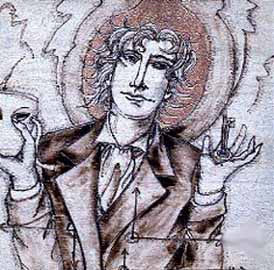
The reason for believing this is that of the sheer animistic behavior of the Trickster simply points to a more primitive version of what humans were as their conscious was still evolving. In a very real way, the Trickster Archetype is one of the most primitive of all archetypes, as it’s remnants can be traced all the way back to the very beginning of the evolved human race, as we were first considered homo-sapains. It sought out to find pleasure as it sees fit, and it typically does not care about the needs or wants of others. Jung believed that the Trickster Archetype was one that had hardly left the realm of animistic life. They can also show up as a childish figure never really ready to grow up and take on responsibilities that they should be taking on. The Trickster Archetype is typically a chaotic, playful character who likes to wreak havoc, not because they are typically evil, though sometimes they are portrayed as such, but instead, they find it as fun.

It’s expressions can be seen throughout all history and in so many cultures. In fact, you probably really are saying, what? That’s okay! I’m glad you came here to find out, and learn more then! The Trickster Archetype is an Archetype that resides in the Collective Unconscious. Some of you may not even know what the Trickster is. Carl Jung and the Trickster Archetype- What? Finally, I will go over a small example of a character most of us know to show how common the Trickster is even in movies. After we look into that, I then want to go over how the Trickster can relate to Thelema and how I incorporate this Archetype in my own religious beliefs. After that, I will go over how the Trickster Archetype relates to the mind and our every day life. First I want to talk about what the Trickster is, so that people can have a better understanding of what I mean by the Trickster. With that being said, I’ll layout what I would like to discuss in this post when it comes to Carl Jung and the Trickster Archetype. He believed these themes came from a greater conscious that resided within us all, the Collective Unconscious.Ĭarl Jung and the Trickster Archetype seem to really go hand in hand with one another, as well, because it is the Trickster that most people think of when they her about the Archetypes, and that is why I have chosen this archetype first and foremost to talk about.

He had a particular belief that there were different themes that seemed to come up in different cultures, all being the same, even though those cultures would not even have a chance to know of one another. He really cemented this idea through his studies in culture and history. Archetypes, as we have talked about in a previous post, came about in Analytcial Psychology by a man named Carl Jung. Greetings everyone and welcome to another post! Today I want to look at an Archetype that a lot of people like to talk about, and that is the Trickster Archetype.

Do what thou Wilt shall be the whole of the Law


 0 kommentar(er)
0 kommentar(er)
